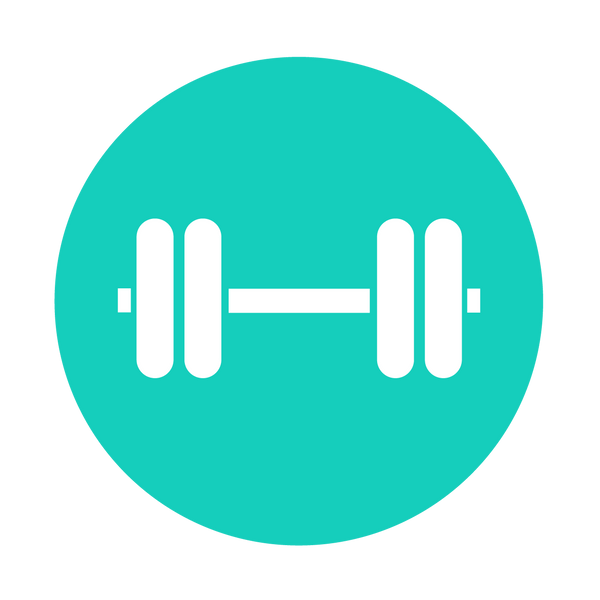When trying to avoid a plateau, sometimes changing up the exercises just isn't enough. What we really need to change is the WAY we exercise. By incorporating these effective training techniques into our workouts, we will be keeping our muscles guessing and they will be consistently challenged. Variety is key.
1. Pyramid Training
Straight sets after a few months, using the same weights, will need to change if you want to grow. Our bodies are very good at adapting. Once things start to get easier, find a way to challenge yourself. Try mixing in pyramid sets to help stimulate growth. As an example, we will be using the dumbbell chest press. Grab 3 sets of weights that increase slightly by a few pounds like 10lb, 15lb and a 20lb. Lie down on the bench, grab your 10 lb. weight and do 10 reps. Switch to the 15 lb weights and do 8 reps. Lastly, grab the 20 lb. and do 6 reps. This is a pyramid workout. You can also do RPT (Reverse Pyramid Training) and start with the heaviest weight and decrease.
2. Grips
The way we hold a cable, dumbbell or even a bar can change everything! Lets use lat pulldown and our example. This workout targets your back or what many refer to as "wings". When holding the bar on a wide grip you are working a completely different area of your back than you would if you were holding a narrow grip on the bar. You can also change up your hand positions to face away or towards your face. Try out all the variations to see which you like best.
3. Drop Sets
Drop sets are essentially a technique where you perform an exercise and then drop (reduce) the weight and continue for more reps until you reach failure. Drop sets can be performed with any exercise that involves weights. When you think you can't do any more, drop the weight, grab a lighter one and perform as many reps as you can.
4. Tempo
Tempo, just like in music, is the speed at which you complete your exercises. Most of us take a few seconds to complete an exercise but when trying to gain muscle mass, the best way is to increase the time under tension (TUT) that the muscle is under. The more TUT, the better! There are many different tempos to choose from but my personal favourite is the slow and steady. When doing a squat, i like to count in my head 4-3-2-1 as i descend into my squat. Then i hold the square for 1-2 seconds. On my way up i count in my head 4-3-2-1. That is a total of 10 seconds for 1 rep. When you multiply that by 10-12 reps, that's a whole lot of tension on the booty!
5. Superset
Save time and exhaust the muscle with supersets. Its best to couple opposite muscle groups like biceps and triceps. Directly after doing a bicep exercise, with no rest, go straight into the tricep exercise. Research suggests lifting in supersets can be just as effective as normal sets at building strength while adding an additional cardio component because of the lack of rest. For added punch, do similar body parts — shoulders and shoulders, legs and legs — for a serious workout and to fatigue the muscle.
6. Compound Exercises
A compound exercise is when you combine multiple exercises and combine to create one exercise. For example, we will combine a squat with a shoulder press. Get in a squat position while holding dumbbells. Squat down then when getting up, do a shoulder press.
7. 1½ Reps
When performing any exercise, there is always a way to make it slightly more difficult without having to add more reps or weight. When doing a lateral raise for example, raise your arms for a full range of motion. Instead if coming straight down to complete rep #2, drop your arms 50% lower and then straight back up for a full range of motion. Slowly bring your arms back down by your sides. This is what i call a 1½ but counts as 1 full rep.
8. Training To Failure
During most lifts with a moderately heavy weight, the set is completed before failure is reached. When training to failure — lifting until the body can't do a single more rep — recruits more muscle and triggers the body to release more strength-building hormones, it’s most effective if a very high percentage of a one rep max can be performed . Also, sets to failure increase the opportunity for overtraining and injury, so it’s best to use this technique only occasionally and with a spotter.
9. Static Hold
Static holds are familiar to some as a great strengthening technique used in yoga. They can be performed with body weight movements — get in the top of a plank or a deep squat position and hold — or they can be done by holding weights (in a slightly contracted position or with full lock out). Time how long you can hold a plank to see improvement from week to week.
10. Negative Sets
Weight training works with and against gravity. The motion towards the bar in a pull-up is called the "concentric movement," while heading back towards the ground is an "eccentric movement," or the negative portion of the movement. Resisting the pull of gravity during the negative porting of the movement taxes the muscles in a different way . At the end of a long set, switch to just performing negatives (with a partner's help on the way up).
Resources:
- http://www.exrx.net/WeightTraining/Techniques.html
- http://greatist.com/fitness/8-effective-strength-training-techniques-try-now
- http://bodybuilding.com
- http://www.dapperfitness.com/reverse-pyramid-training/
- https://www.t-nation.com/training/questions-about-tempo-training
